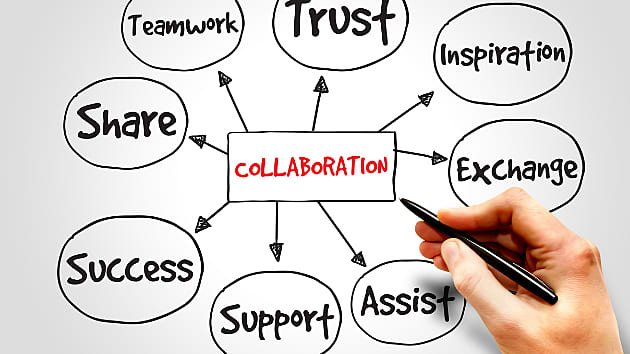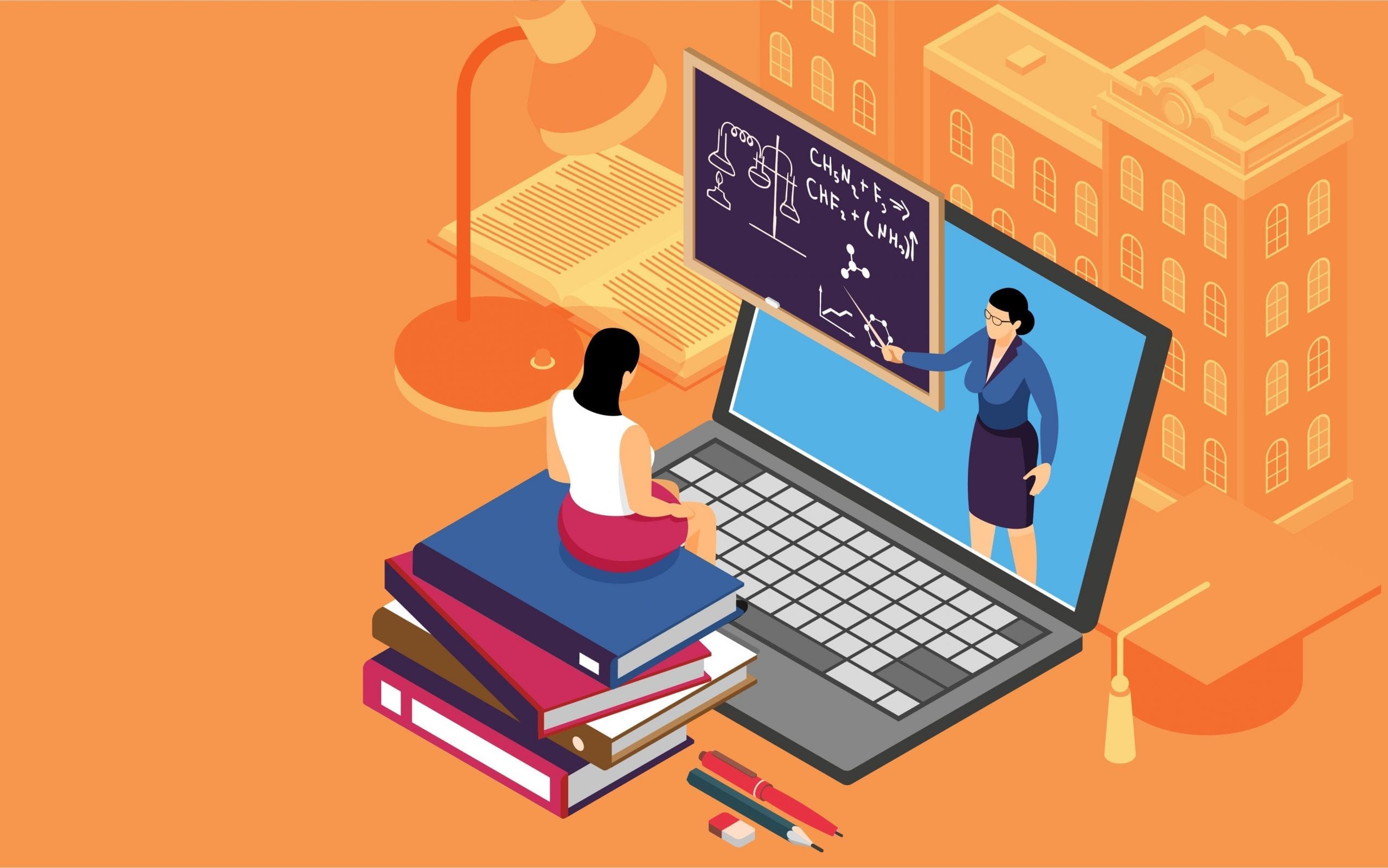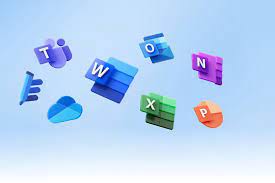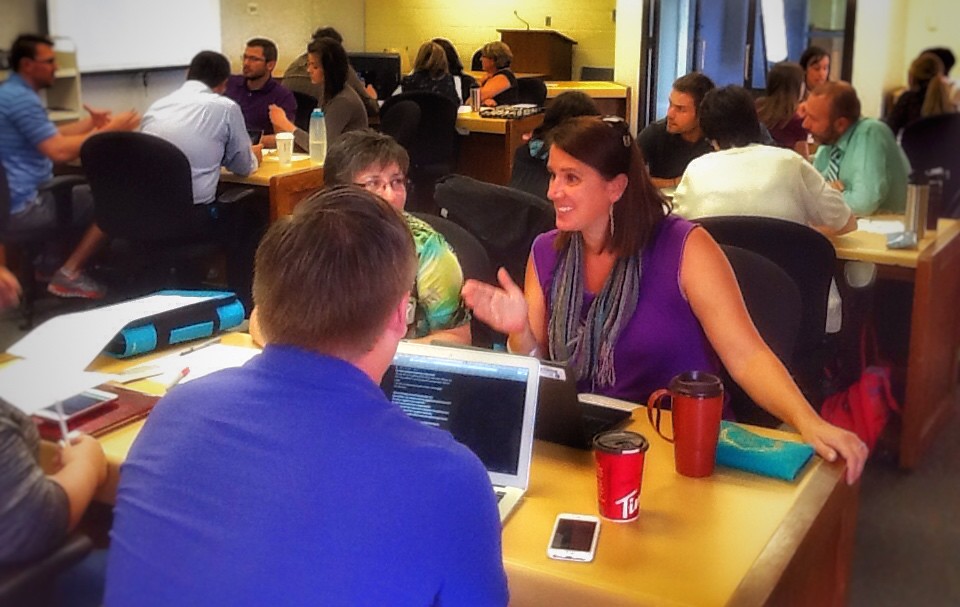Home » Posts tagged 'education' (Page 4)
Tag Archives: education
Worldwide Education Collaboration and the Importance of Transnational Education
By Troy Deman
Introduction
Since the dawn of humanity, we have benefited from the sharing of knowledge and collective learning across towns, cities, countries, and entire societies. We help teach those around us new ideas and information and as a result we collectively collaborate to progress not just as separate people but as spices as a whole. While collaborating through the sharing of ideas and knowledge in classrooms is common today, many people don’t think about the collaboration of education and its resources across separation nations. However, in recent years a new system has emerged to help provide new educational opportunities and resources to peoples who lack it most. This system is called Transnational Education or TNE.
What is TNE and what does it do?
Transnational education is essentially “all types of higher education study programs, or sets of courses of study, or educational services (including those of distance education) in which the learners are located in a country different from the one where the awarding institution is based” (Riga, 2001). Through TNE programs, higher education institutions like universities are working with each other to provide educational opportunities and share knowledge to countries and people outside of the country the institution resides. This is a game changer for countries that lack sufficient higher education opportunities as universities can share their resources and collaborate with countries outside their own to provide education to regions that lack it. This program will help humanity overtime increase the spread of and access to high quality education across the globe.
“Institutions are increasingly recognizing the value of global collaborations in TNE. Joint ventures between universities, cross-border partnerships and collaborative research initiatives are on the rise. These collaborations not only help widen access to international education and meet local demand, but also contribute to enhancing the quality of education internationally, supporting the development of local capacity and the creation of richer and more diverse learning experiences” (Riaz & Trifiro, 2024).

Drake, D. & InBusiness. (2015, May). Making Global Connections Work. InBusiness Greater Phoenix. https://inbusinessphx.com/partner-section/making-global-connections-work.
Benefits to TNE
There are other benefits to TNE programs as well including.
- lower tuition fees than mobile international students
- Better gender eqaulty
- Much more flexable for working students
- Preventing brain drain on the countries using TNE
Conclusion
This program will help humanity overtime increase the spread and access to high quality education across the globe. TNE will help humanity reach a future where different peoples, ethnicities, and cultures around the world all have access to high quality education which will in turn increase the diversity of human thinking and improve the collective learning of the planet.
“TNE serves as a bridge, connecting individuals, institutions and education systems across the globe, in the process helping to foster that shared understanding and sense of global citizenship required for peaceful and constructive relations between our increasingly interconnected communities” (Riaz & Trifiro, 2024).
Thanks for reading through my 2nd blog, if you want to see more check out the original article linked here The untapped value of transnational education. Also check out Nishat Riaz on twitter at https://twitter.com/nishatriaz where I originally found the article.
Citations
Riga. Code of Good Practice in the Provision of Transnational Education, 2001, www.cicic.ca/docs/TNE-Code2001.en.pdf.
Riaz, Nishat, and Fabrizio Trifiro. “The Untapped Value of Transnational Education.” University World News, 27 Jan. 2024, www.universityworldnews.com/post.php?story=20240126230211149.
Collaboration Between Educators and Learners, and its Correlation With Effort
The importance of weighing a students interests and opinions in building lessons is increasingly becoming apparent, as students with a choice in some material tend to show more tentative and beneficial learning practices.

Through the book Inclusive Learning 365, the coauthors Christopher Bugaj, Karen Janowski, Mike Marotta, and Beth Poss all demonstrate the importance of collaborating with students to provide relevant materials and coursework. They write: “Use a digital form to survey learners about their interests and passions. The learner and educator can then set personalized goals to monitor outcomes and the steps taken to achieve them.” (Bugaj 2) This demonstrates a possible use of a students inputs on goals and materials. It is also explained that individuals who are invited to choose their studied materials are more likely for active participation throughout the class.
Class Collaboration
What does Collaboration look like in the Edcuation
For collaboration to happen among members of an inclusive learning community; teachers/ educators come together as equals to create innovative plans to help the students succeed in the classroom.

Why Collaboration is Essential for All Teachers
- Contributes to school improvement
- Develops relations and provides emotional supper
- Encourages the use of technology to help teachers connect with one another
- Allows teachers to play their strengths and learn from one another
A lot of people are naturally good at forming connections and exchanging ideas. It’s beneficial to have informal conversations in the lounge or hallway regarding a specific student’s behavior or an upcoming lesson or activity. It is almost always beneficial to educate newcomers about building logistics and administrative expectations. However, for teacher collaboration to be successful, it needs to be deliberate, organized, and district- and building-wide.
Ways to Engage Collaboration with Students
When students collaborate, they take part in an activity that develops community building and cooperation. Students provide feedback to one another, which sparks new ideas. Working together fosters a setting where students respect one another’s abilities and feel that they can all learn from one another.

3 Ways of Engaging Collaboration
- Play Games: Collaboration doesn’t necessarily come naturally to students. It is something that requires direct instruction and frequent practice. One of the best ways to train your students to work collaboratively is through game playing. Cooperative classroom games help students become critical thinkers, learn to work with one another and establish a positive classroom environment. The best part? Kids have fun while developing these skills!
- Moment in the Spotlight: Flipgrid! A simple yet powerful tech tool that allows students to express themselves creatively and amplify their voices. Teachers create grids with topics of discussion and students respond with recorded videos to talk about, reflect, and share via webcam, tablet, or mobile device
- Safe Space for Discussion: With any form of group big or small there shouldn’t be tension between any voices. Teachers need to create an environment where everyone feels comfortable to share their opinions.
Overall collaboration is key to education. The built of social skills and teamwork skills are put to the test when collaboration is inculcated into the educational environment.
Thanks for reading! Follow me on X @trefz_riley
Collaboration In Education
Is it important to create office hours for students in the summer? Author and Principal, Dr. Bryan Pearlman takes this topic to “X”, and believes this is important in connecting and setting up a good foundation for the new school year. Dr. Pearlman argues that by him keeping his hours extended into summer he has help set a child up for the year, going from a “bad” student to a brand new version. The students mom went to the principal asking for him to meet her son early, without hesitating he said yes, even though she described her son as “the schools bad kid”. This did not stop Dr. Pearlman, he instead heard his favorite things and reassured this mom that he sounds like a “cool kid”. A little later, he met the student, and after just a short hello he noticed this kid knows how to make a good impression. After spending the day with him Dr. Pearlman knew exactly what to do, and he met up with this students new teacher for the year. Together they used Dr. Pearlman’s, “10 Minute Problem Solving”, which was created by him a few years back. After doing research, I figured out what the “10 Minute Problem Solving” method is, basically Pearlman suggests principals and educators sit down and come up with a plan that can be implemented that very day, which is awesome! Pearlman says, “The time and energy really pays off with reduced disruptive behaviors, improved outlook, and success in school and life.” which was found on Dr. Bryan Pearlman’s LinkedIn. This method paid off, because this student went from the “bad student” to being one of the best Pearlman ever saw in his career! By never collaborating with other educators people can miss out on this amazing strategy which can really change a students life. Without Pearlman offering these hour this student may still be stuck in his old ways, now he is a brand-new student!
Podcast: Play in new window | Download
How Technology is Improving Equity For Students
Technology was never needed more in education than when the 2020 Pandemic shut down School across the globe. With classes being changed to online through sources such as Zoom or Google Meet, teachers had to scramble to adjust lesson plans and schools had to find a way to give each child equal equity as not all have the same access to resources. In the article Five Ways the Pandemic Improved Equity for Students, Nicole Krueger discusses how schools implemented plans for each student to have equal access to Educational Technology resources.

WiFi
The pandemic was hard on people all across the world, which made it so everyone had to do their part to help. Many districts were handing out iPads or Chromebooks to students who did not have them at home so they could continue their education online. One way that internet providers were lending a hand was by offering free or discounted WiFi hotspots to families who did not have internet access. Schools were also opening their parking lots for families to benefit from their WiFi and work from their cars (Edtech for the K-12 Classroom, Second edition, page 25).
School Bus Shipments
Technology and the internet are not the only things students may not have had at home, as many families relied on the meals given at school. Some districts were using their school buses to deliver books and WiFi hotspots as well as breakfast and lunch to students. (Edtech for the K-12 Classroom, Second edition, page 26). This act provided a connection within the community that may have been at fear of being lost with so much distance between people.
Television
According to Nicole Krueger, “Los Angeles Unified School District partnered with three local public TV stations to run daily educational programming from 7 a.m. to 7 p.m. during the pandemic” (Edtech for the K-12 Classroom, Second Edition, page 26). These stations used the PBS library for shows that catered to each specific age group (elementary school, middle school, and high school). Throughout the program, there were sections that were stressed or emphasized to help children watching better understand the thought process the show was taking. This provided students with a new learning tool that many could watch that both kept them studying and entertained.
Paper and Pen
Despite the best efforts by teachers, administrations, and other providers, not every child will have access to internet use, at least until it becomes accessible easier. In order to continue giving each student equal equity, it is important for teachers to always have physical copies on hand for each of their students. The article states that “The Massachusetts Education Equity Partnership urges district leaders to regularly distribute multilingual learning tool kits in paper as well as digital form for every grade level and major subject…” (Edtech for the K-12 Classroom, Second Edition, page 27).
The Future
Though the ideas that were brought into action during the pandemic were progressive and a huge help, they were not perfect. With technology being used in classrooms more and more, as well as class updates and homework assignments being posted online, is important that each child is being given an equal education despite what they may not be able to access freely at home. The pandemic had brought attention to the issue, and while this is an unresolved issue, as it may always be with new technology being released seemingly everyday, teachers and professionals are working tirelessly to aid every student in their own, unique situation.
Interactive Storytelling to Strengthen Literacy
Over the past few decades, technology has proven to be a useful tool in classrooms all across the globe. Within the past twenty years, educators have come to the conclusion that not only can they use technology to teach, but so can students. Students often listen to -and can even learn the best- from their own peers. What better way to check a student’s understanding of the most recent novel read in class than a book trailer!

Inspiration
Kristin Harrington’s book, Adventures in Authentic Learning: 21 Step-by-Step Projects From an Edtech Coach provides several ideas and lesson plans to get students comfortable with using technology in the classroom. In particular, one lesson plan is all about increasing the literacy level of your students by having them create book trailers (pgs. 24-27). This lesson plan focuses on a student’s understanding of the material they had read, either in or out of the classroom. Students can choose to focus on specific literary devices (figurative language, similes) or the key ideas of the overall story (theme, plot).
Outcomes
The best part about this specific lesson plan, is that it can be done across all grade levels! In terms of elementary students, they will be able to solidify and effectively relate their newly learned literacy terms with someone they read in class. In addition, the K-5 students will have an introduction to technology meant for filming and editing videos. Upper grade levels (6-12) can create a more in depth trailer, allowing for the students to learn more about filming, writing scripts, and editing videos; the students will also be able to better analyze and display a better understanding of literary terms across various book genres.

AI in Elementary
AI tools in the classroom can be a questionable thing. Especially when we want kids K-5 specifically to start using these types of new tools in the classroom. Why is it important to start showing kids this new technology? Having hands on AI projects in the classroom in order to further students knowledge on the positive impact AI has on our society. What is the outcome?
AI in your courses
Learning with AI can create a very positive classroom environmen. Students are now offered a form of personalized learning, finding their strengths, weaknesses, skills, and needs. AI systems help students learn more effectively and students can become powerful users of these tools.
Making the projects happen
“The projects in this guide use a student-driven approach to learning. Instead of simply learning about AI throughvideos or lectures, the students completing these projects are active participants in their AI exploration.” (p.7) Students are able to directy work with AI technology and learn how to properly use them in order to know how they can be used in daily life without having to think about how they work. AI technology, can truly turn a classroom around. There is easy access for students, lessons generated online, information that is visualized for the children, never ending assistance, and so many more benefits. Learning about AI and using it in the classroom is something that needs to be implemented in schools.

This image shows students teaming up with AI
Teaching Teachers About Technology
By Troy Deman 1/28/2024
Technology has become an essential part of the classroom in the last two decades. To assist with the incorporation of technology into traditional technology environments technology facilitators or coaches have been established in school settings to support teachers using technology and “guide how, when, and why to incorporate technology into the curriculum” (Transform learning through technology, page 1). While it’s easy to assume the job and role of these facilitators and coaches have stayed the same, due to changes in technological advancement and understanding as well as different approaches to teaching with technology, their duties have changed greatly over time.

During the early 2000s as technology first became integrated into the classroom, teachers were taught by technology facilitators how to use common computer programs such as Microsoft Excel and PowerPoint. It was then hoped that teachers would share their knowledge of how to use these programs with their students. The problem with this system is that while teachers taught about technology and programs in the classroom, they didn’t use the technology to help them teach.

By the late 2000s early 2010s the name changed from technology facilitators to technology coaches “Since it was recognized that educators needed higher quality professional development” (Transform learning through technology, page 2). The hope was to teach teachers how to effectively incorporate technology and pedagogy to improve student learning. However, this strategy still involved one and done training and the technology coach had full control over what technology and strategies should be used by teachers.

The latest change to technology coaches was brought about by increased research and understanding of professional development in use of technology for teaching. Now the act of training teachers on the incorporation of technology into the classroom is much more collaborative. Today the technology coach “ works in collaboration with both educators and educational leaders, listening to their needs and developing relevant professional development opportunities” (Transform learning through technology, page 2). The one and done training strategies was also done away with as now coaches use “iterative, cyclical coaching frameworks to provide ongoing support and development strategies” (Transform learning through technology, page 2).
While one might question why this information is important to understand for teachers today, especially since most of us won’t be technology coaches ourselves. However, it’s important to remember that even though we might not be coaches ourselves, in this collaborative style of technology coaching we all have to be willing and able to support and collaborate with others and the technology coach themselves on how to incorporate technology in order to create the best possible environment for students to learn. It’s also important to keep in mind that as technology has changed and advanced into the school setting, we have had to change and advance how we train on and incorporate technology in the classroom. So, we must be prepared to further change and adapt our approach to technology in the classrooms as technology changes and improves in the future.
Thanks for reading my first attempt at a blog.
If you want to learn more about technology coaches and the Intergration of technology in the classroom, visit the link Transform learning through technology. for more.
Make sure to also follow my twitter or x @troymdemant
Crompton, H. (2022). Transform learning through technology: A guide to the ISTE standards for coaches. Hawker Brownlow Education.
Technology in Teaching
In the article I have read about creating videos for students in the classroom to learn from. The article is titled, “Four Tips for Creating Awesome Classroom Videos” on page 15, found in the link. The teacher from the article found a way to help all students at the same time, by using an online video created by him to help explain the topic more. The teacher we read about, John Stock, taught his coworkers and other educators about this neat way to help all of the students. Stock didn’t just use his videos to go over the lesson, or to teach, but to give out announcements as a way to connect with his students. By adding in these informational videos, it provided time for him to work one on one with the students who needed the extra attention. After his introduction to the topic and why they are important, we learn from Stock four amazing tips to help us educators see just how he made this possible. Stock starts off with telling us, “Just do it!”, instead of being nervous or worrying perfection it’s more important to just hop on the screen and try. Doing this benefits your students, they don’t need to see perfection all the time, just try and show them what you got! Second tip, be simple! Get right to the point in your videos, don’t overcomplicate or use big vocabulary, make it so everyone can understand. Stock also mentions QR codes as a nice easy way to get your video out there, instead of logging in, going through many different websites, have it easily accessible. Connect with your students, introduce yourself and don’t be overly closed off to students, you need to form a genuine connection. Finally, a big one to help nowadays, model famous social media personalities. Kids all the time now are on YouTube and social media, they like they videos usually because the person producing them or how they act in front of the camera. Model that, use funny lines, add in cool transitions, etc. the students want something they can relate to.
This image

Technology in Education
With technology playing a huge role in our everyday lives and being so prevalent in today’s world, it is used to help educate. Schools are utilizing the benefits of many technical platforms. The International Society for Technology in Education, or ISTE, builds a global community of educators with ideas and beliefs about the power technology holds to benefit teaching and learning.
Here is a short video of the ISTE:
The Use of AI
Artificial Intelligence, or AI, is becoming more well-known throughout the world. AI helps us with what we don’t even realize daily. It helps us filter out our spam emails and has suggestions for replying to them. Also, AI is used in Google Maps to provide real-time traffic data. With AI being a part of everyone’s lives it is now feeding into the education community. To succeed in school and life, all K–12 students need a foundational understanding of what AI is, how it works, and how it impacts society. AI education is important across all subject areas, not just computer science classes.

5 Big Ideas in AI
These guidelines outline what all K–12 students should learn about AI. All of the projects in this guide shed light on one or more of the initial four fundamental ideas: perception, representation and reasoning, learning, and natural interaction.
The development of AI-related projects in K–12 classrooms can also be framed by the ISTE Standards and Computational Thinking Competencies. To prosper, develop, and contribute in a global, interconnected, and dynamic society, K–12 students must possess the knowledge and abilities outlined in the ISTE Standards for Students.
Chat GPT is a great example of AI. It is a free-to-use AI system. Use it to engage in conversations, gain insights, automate tasks, and witness the future of AI, all in one place.

